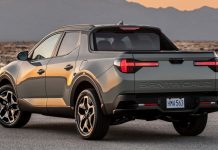Here is the latest reader question, along with my reply:
Bruce asks: I just listened to your podcast with Tom Woods. When you got to talking about electric cars vs. gas-powered cars I kept waiting – but never heard – the most important point: Electric cars are basically coal-powered. We expect government and media to miss (or not mention) this, and the vast majority of Americans seem to be clueless about it, but energy is not free. I only have a high school education (class of ’68), but transferring energy from a coal-powered electric plant (which most of them are) to your home, where you plug in your electric car, does not make the car “green.” The amount of pollution (if it even matters) does not change. No, it doesn’t come out of the tailpipe, but it does come out of the power plant’s exhaust. There is no free lunch. Whatever scrubbers that coal plants have on them are probably not as clean as a modern gas engine.I’ve been raising this point for at least 30 years, but nobody seems to listen, even libertarians. It is the most crucial criticism of electric cars and until someone can tell me I’m full of crap, it blows the whole “electric cars are cleaner” argument out of the water. It is nothing more than another taxpayer-subsidized, politicized boondoggle like corn-alcohol fuel and solar power.
My reply: You’re absolutely right, of course. I’m assuming you’re new to EPautos – and my work – because I agree with you abundantly and have expressed this agreement in my articles many times over the years.
Someone once described electric cars as “elsewhere emissions” vehicles, as opposed to “zero emissions” vehicles. Their emissions are emitted at the smokestack – and also include the production/manufacture of their battery packs.
One must also consider the fact that modern IC engines are extremely low-emissions at this point (see today’s lead article) such that the debate is now over fractional differences in output of the harmful things.
Thus, the new fixation on carbon dioxide.
Which of course IC engines necessarily produce as a byproduct of combustion and which – key thing – cannot be chemically scrubbed or reduced via any means except by burning less gas (or diesel).
It is thus the unanswerable trump card of those who want to End internal combustion.
But unlike other byproducts of internal combustion, C02 isn’t harmful – at least, it does not cause health problems or contribute to smog or acid rain. It is an inert gas and – up till now – has never been classified an “emission.”
But it is being classified as one in order to End internal combustion – to give electric cars an artificial advantage; to force them onto the market.
And yes, I know… the generation of electricity also produces C02!
None of this makes any sense until you realize that the object isn’t “clean air” – much less to lower the cost of transportation for the average person.
It is to control the average person – and make life more expensive for him.
. . .
Got a question about cars – or anything else? Click on the “ask Eric” link and send ’em in!
If you like what you’ve found here, please consider supporting EPautos.
We depend on you to keep the wheels turning!
Our donate button is here.
If you prefer not to use PayPal, our mailing address is:
EPautos
721 Hummingbird Lane SE
Copper Hill, VA 24079
PS: EPautos stickers are free to those who send in $20 or more to support the site. Also, the eBook – free! – is available. Click here. Just enter you email in the box on the top of the main page and we’ll email you a copy instantly!












I’d actually like to see someone do the “math” on the carbon expenditure for the production of the vehicle itself. For all the people who are trying to get the “greenest” cars available (I’m looking at you Tesla), what have their minor “fuel” savings cost the planet? And, it’s being sold as a “good thing.”
Consider the entire scope of vehicle production from mining the metals and petroleum for plastics (which itself requires infrastructure) to the design, production and transport of parts and finished vehicles worldwide. Sorry, but there is a lot of “carbon” expended in a vehicle even before anyone even sits in it, probably multiples more within the “greener vehicles”.
That all has to be taken into account before you start looking at the “go-go juice” issues.
Why don’t they list those statistics when they sell a car? Where’s the EPA on that front? How much energy or carbon is expended on all the extra “safety” features? The energy expended to run all the bells and whistles has to come from somewhere. Where’s the accounting for that?
I’ll keep my older model vehicle that still gets good mileage and leave all this “dreaming” to the next generation… hopefully they’ll wake-up before it’s too late.
New cars have so little pollution that at the Chicago Auto Show every year, Chrysler has an indoor track (mostly jeeps) in its display. Yes, they are operating gas vehicles inside McCormick place. Outside of some extra fans on the ceiling, they don’t seem to be doing anything else. Granted the room is 840,000 square feet with a 40 ft ceiling so there is a lot of volume but they are engines running all day in there.
If the power source was nuclear then the CO2 emissions would be 0. But only if the machines used to extract the uranium/thorium were also electric and powered by the Nuke plant.
Same with Hydro power. Same with solar and wind.
In all other scenarios the increase in efficiency of producing large scale power doesn’t make up for line loss and other distribution losses in the equation.
But of course we can’t have nukes, so they think we’re somehow going to get all of our energy from solar and wind, because hydro is mostly exploited already and people hate it because it hurts salamanders…